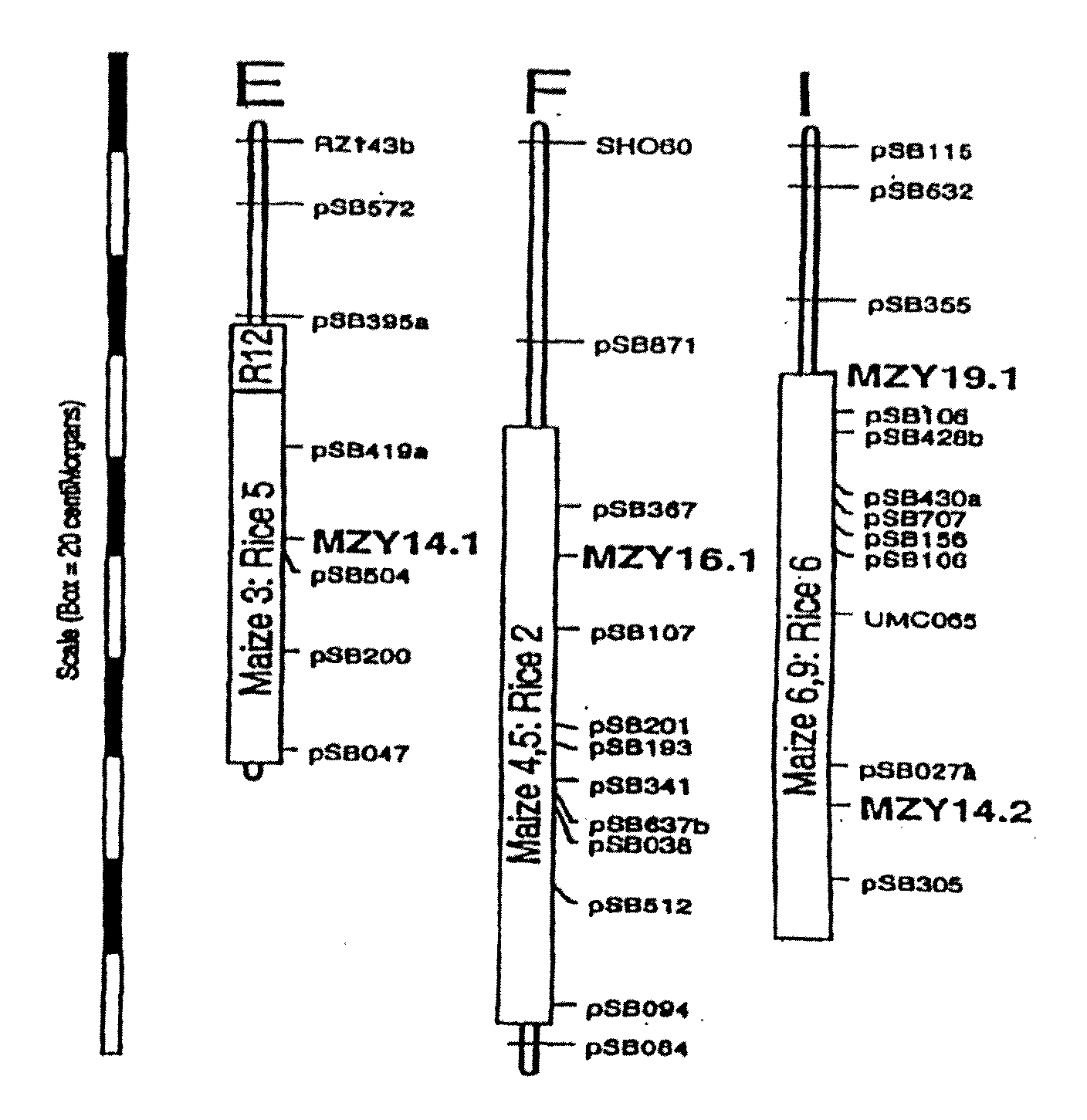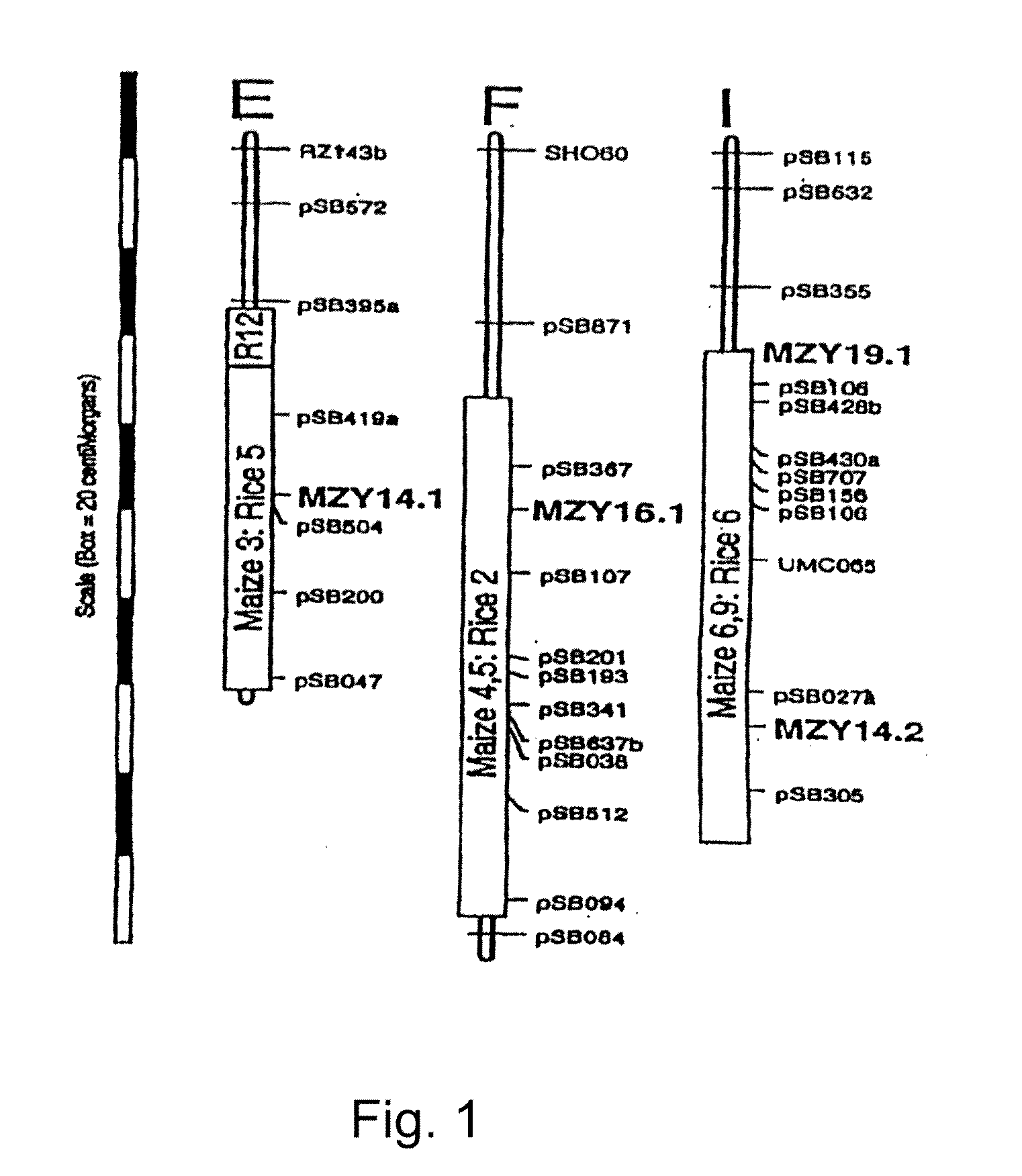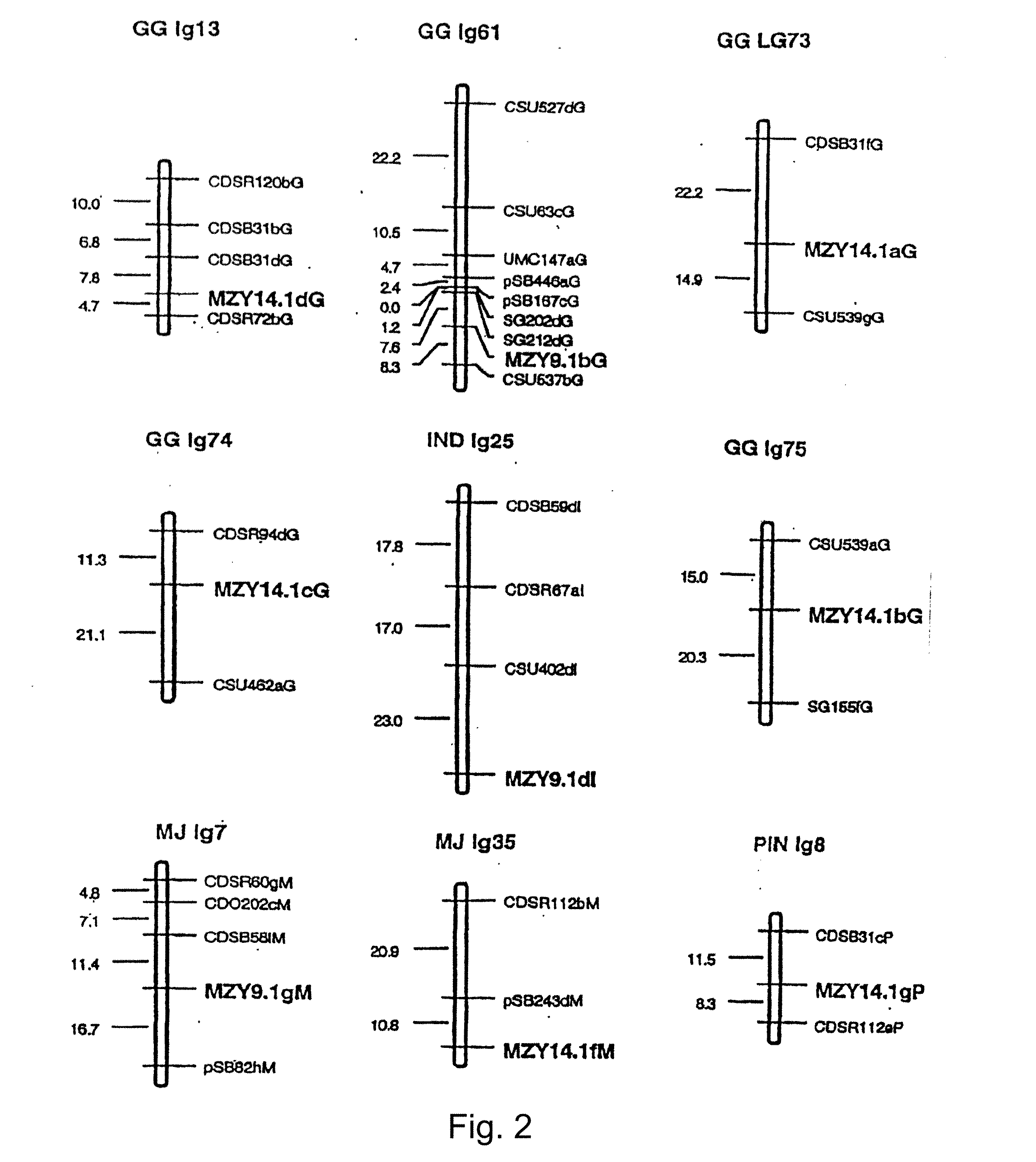Methods and Constructs for Producing Transgenic Plants and Methods of Recovering Expressed Proteins
a technology of transgenes and plants, applied in the field of gene engineering and processing of transgenes, can solve the problems of still worrying the expression level of transgenes, and no one has reported the use of promoters or introns from sugarcane itsel
- Summary
- Abstract
- Description
- Claims
- Application Information
AI Technical Summary
Benefits of technology
Problems solved by technology
Method used
Image
Examples
example 1
Development of Transgenic Grassps for Molecular Farming
[0069]This example relates to developing transgenic grasses suitable for molecular farming. Because of high biomass potential and multi-functional utility, sugarcane or sorghum may be used. The first step will be to introduce genes into these crops which will economically produce high value lytic peptides and proteins to be used in the pharmaceutical and biopesticide industries. Sugarcane and sorghum, closely related plants, are very efficient producers of biomass, and the sugarcane milling process is an efficient biomass extraction system. Transgenically expressed peptides and proteins would be expected in the normally discarded residue of the first processing step after milling, juice clarification.
[0070]Genetic transformation of grass-like crops has previously been slow because the methods of gene transfer that work for broadleaf plants are not suitable. We have developed a particle bombardment transformation system and a reg...
example 2
Molecular Farming, with Transgenic Gramineous Crops
[0073]In this example, sugarcane and sorghum are also used to express lyric peptides and proteins that have high value as pharmaceuticals or biopesticides. As noted, we have developed a reproducible biolistic based transformation and regeneration system for creating transgenic herbicide resistant sugarcane (Gallo-Meagher and Irvine, 1993; 1995) and have made significant progress in biolistic transformation of sorghum. We have also obtained from industrial collaborators cDNAs that code for lytic peptides or proteins that have high value as pharmaceuticals or biopesticides,
[0074]Specifically, this example relates to transgenically expressing in sugarcane and sorghum the cDNA coding for bovine lysozyme, a potent broad spectrum bactericidal protein found in cow rennin (Mirkov and Fitzmaurice, 1991). This protein has many potential uses in the biopesticide industry. For example, we have shown that the purified protein is extremely effect...
example 3
Engineering Resistance to Sugarcane Mosaic Virus
[0085]Sugarcane mosaic virus (SCMV) and sorghum mosaic virus (SrMV) are aphid transmitted potyviruses with single stranded RNA genomes. There are several strains that cause significant losses in sugarcane growing areas throughout the world. These viruses have been difficult to control in cultivated varieties by the transfer of virus resistance genes from naturally resistant varieties through traditional breeding programs. However, it has now been demonstrated that it is possible to control potyviruses very effectively by genetic engineering. This technique is known as “coat protein-mediated resistance” and is a form of pathogen derived resistance. It has been demonstrated for many viruses, and in many plants, that the virus is controlled by transforming the plant with the virus gene that produces its coat protein. Furthermore, production of transgenic sugarcane is now a routine procedure in our laboratories.
[0086]A project has been ini...
PUM
 Login to View More
Login to View More Abstract
Description
Claims
Application Information
 Login to View More
Login to View More - R&D
- Intellectual Property
- Life Sciences
- Materials
- Tech Scout
- Unparalleled Data Quality
- Higher Quality Content
- 60% Fewer Hallucinations
Browse by: Latest US Patents, China's latest patents, Technical Efficacy Thesaurus, Application Domain, Technology Topic, Popular Technical Reports.
© 2025 PatSnap. All rights reserved.Legal|Privacy policy|Modern Slavery Act Transparency Statement|Sitemap|About US| Contact US: help@patsnap.com



